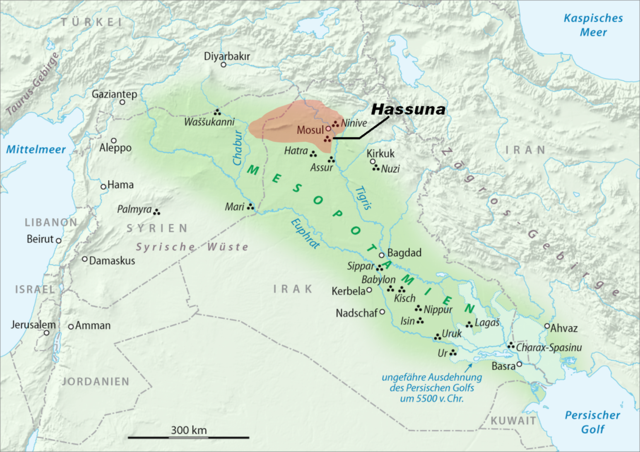
| TELL MAGHZALIYAH
The spread of the Hassuna culture in the Near East Tell Maghzaliyah (Tell Maghzalia) is a prehistoric aceramic Mesolithic and Neolithic site located approximately 7.5 km northwest of Yarim Tepe, with which it shows some similarities. Tell Maghzaliyah shows the development of pre-Hassuna culture. There are also numerous connections to the Jarmo culture going back to 7000 BCE.
Location
:
The site is approximately 4500 square meters in area, and the depth of deposit is approximately 8 meters.
The original village housed approximately 150 people. It was more suited to hunting and gathering, than to long-standing agriculture. Archeological evidence includes flint flakes and debitage, along with evidence of semi-permanent settlement, including houses and utilitarian structures. Permanent settlement remains indicate pisé walls and stone foundations. The clay used for construction was apparently imported from other locations, as the primary natural stratigraphy is limestone loam.
The excavators estimated a total of 15 building levels at the site, each with an average thickness of 50–60 cm. The assemblage suggests a tightly packed settlement, occupied continuously over its existence.
Early
metallurgy :
Other early sites with metal are also Ali Kosh in lowland Iran, and Tol-e Nurabad and Tepe Sialk in the Iranian Zagros Mountains. Also in the Iranian Zagros, near Marvdasht, are located the sites of Tall-i Mushki, and Tall-i Jari showing evidence of early metallurgy. All these settlements date to the late 7th/early 6th millennia BC.
Source :
https://en.wikipedia.org/ |
